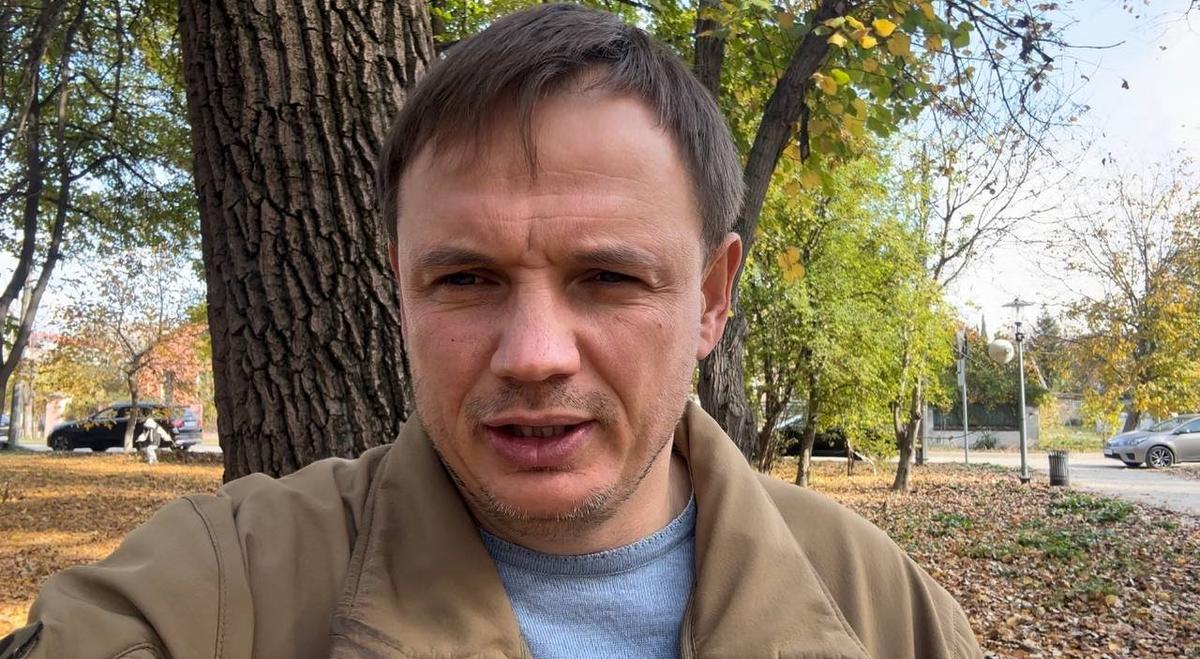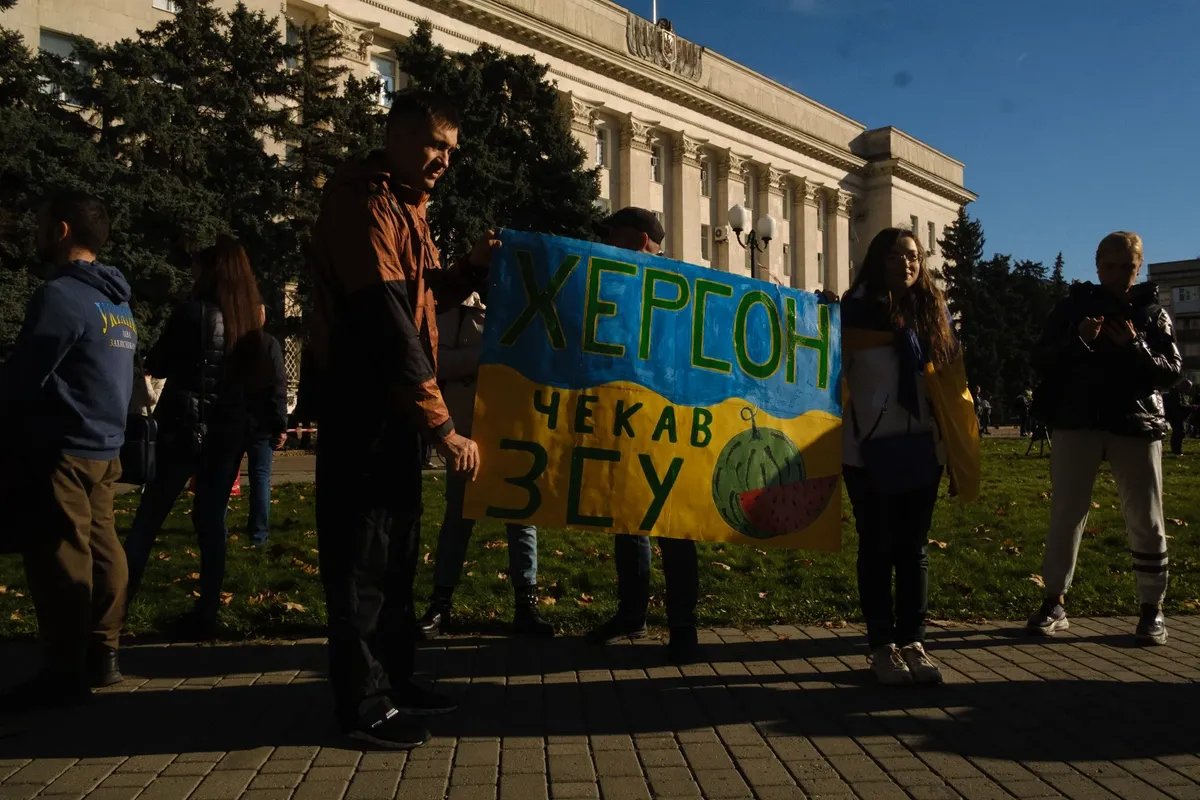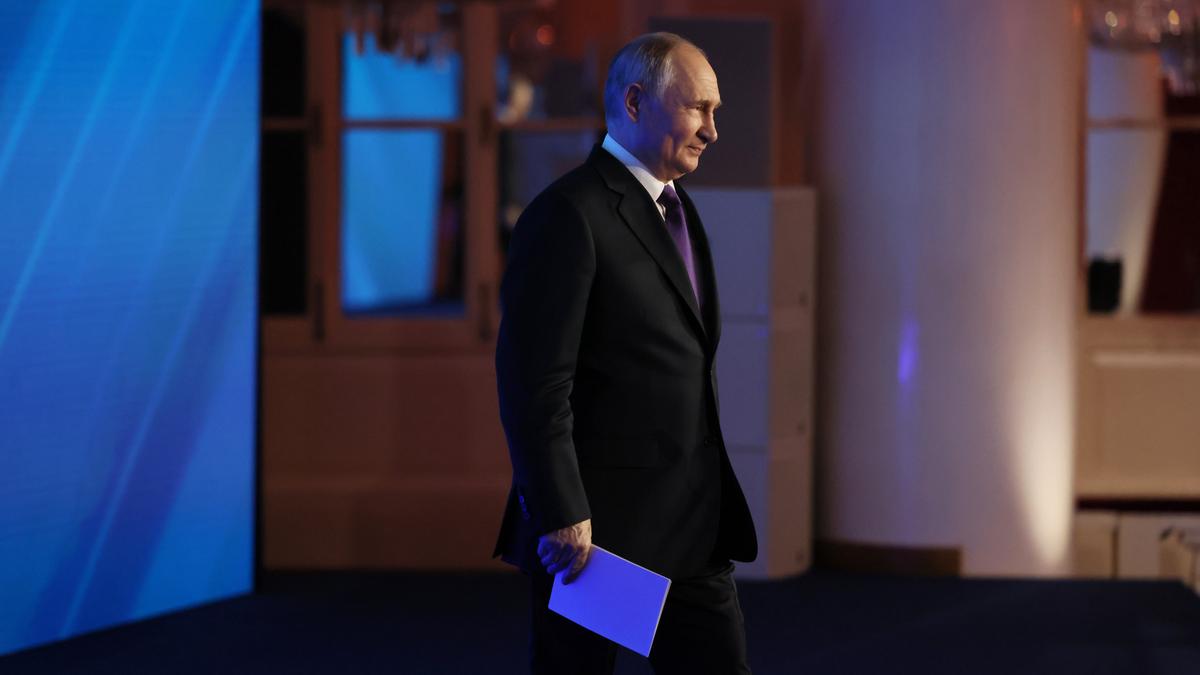To mark the first anniversary of it swallowing up four partially occupied regions of eastern Ukraine last year, Russia has made 30 September “Reunification Day”, an impressive feat of counterfactual propaganda given that it is not even fully in control of the territories it now claims as its own.
When the Moscow-installed governors of the Donetsk, Luhansk, Zaporizhzhia and Kherson regions signed treaties with Russian President Vladimir Putin formalising their accession to the Russian Federation on 30 September last year, the international community condemned both the violation of international law it represented and the sham referendums that had been used to justify it.
And yet, the howl of international criticism wasn’t even the biggest factor undermining Russia’s outrageous land grab. Rather more significant was the fact that it didn’t even fully control the regions, a situation that has only worsened since the treaties were signed, as Russian forces continue to lose territory.
‘Russia is here till November’
Russia currently only controls the capitals of two of the four Ukrainian regions it now claims as part of its territory — the cities of Donetsk and Luhansk. Russian forces retreated from the city of Kherson last autumn in the face of a rapid Ukrainian counteroffensive, while they never even made it as far as the city of Zaporizhzhia.
Kherson has been one of the Kremlin’s chief targets in southern Ukraine ever since the invasion began. Among other things, controlling it would allow Russia to gain a foothold on the right bank of the Dnipro River, opening a path to Mykolaiv and other key cities. The city of Kherson was captured by Russian forces on 2 March 2022, only a week after the invasion began, and immediately became a significant Russian propaganda tool.
Once Russian forces took the city over, a former Ukrainian MP, Vladimir Saldo, was appointed by Moscow to lead the regional administration. Despite this, the leading voice of the occupation in the region quickly became that of Saldo’s deputy, the pro-Russian activist and Covid-19 denier Kirill Stremousov.

Kirill Stremousov. Photo: Telegram
Streaming daily on his Telegram channel to detail life in occupied Kherson, Stremousov was an active supporter of the Kherson region joining Russia and claimed that referendums on whether to become part of Russia would “soon take place all across planet Earth”.
Shortly after the 30 September accession treaty was signed, however, it became clear that Russian control of Kherson was under threat. The Ukrainian army was advancing towards the city, while Russian military supply lines had been cut, by early November, its forces risked being trapped. It was then that the Russian General Staff made the decision to withdraw its forces to the left bank of the Dnipro River, abandoning the city of Kherson.
Despite this reversal of Russian fortunes, Stremousov continued to loudly insist on an almost daily basis that “nobody would be surrendering Kherson” — a deviation from the official line that clearly didn’t go unnoticed in the Kremlin.
On 9 November, Stremousov was killed in what was officially deemed a car crash. On the same day, the Russian Defence Ministry issued the order for Russian forces to abandon Kherson and retreat to the left bank of the river.
Two days later, Ukrainian forces entered the city amid scenes of jubilation. The surrender of Kherson is now widely seen as Russia’s greatest loss in the war in Ukraine to date, having been forced to abandon significant stores of combat equipment and munitions, while “Russia is here forever” banners quickly underwent digital restyling to read “Russia is here till November”.
Support independent journalism
‘Kharkiv People’s Republic’
The Kremlin evidently planned to have more than four Ukrainian regions to show for its efforts, however. In the early days of the war when the Russian army was nearing Kyiv, the Kremlin also attempted to capture Ukraine’s second city Kharkiv, control of which is crucial for both Moscow and Kyiv.
Kharkiv has a population of nearly 1.5 million and has historically been one of the most Russian-speaking cities in Ukraine, so it’s hardly a surprise that there have been two attempted coups in the city already.
In March 2014, after the Maidan revolution in Kyiv, pro-Russian “anti-Maidan” activists (including “Russian tourists” who had travelled to the city) attempted a coup in Kharkiv, managing to capture the regional administration building where they even managed to raise the Russian flag (albeit for just 45 minutes).
The following month, emboldened by the declaration of an independent “people’s republic” in the Donetsk region, the “Kharkiv People’s Republic” was proclaimed and a 150-member “alternative city council” was created during a pro-Russian demonstration.
Separatist forces seized the municipal administration once again; but troops deployed by Ukraine’s Interior Ministry successfully regained control of the building without a shot being fired the following day, arresting 74 people, and the day-old “Kharkiv People’s Republic” ceased to be.
The next attempt to capture Kharkiv took place last year, only this time the Russians came in tanks. On 24 February, Russian forces attempted to attack the city from the northwest and managed to reach its outskirts. Three days later, Russian special forces entered the city with instructions to wait for the Russian military’s arrival, only to find themselves chased out of the city by the Ukrainian army.
In early May 2022, Russian forces retreated from the outskirts of Kharkiv, and while they continued to shell the city for several months, it didn’t come close to falling, though the local authorities say that Russian shelling has damaged around 500 buildings in Kharkiv and destroyed entire neighbourhoods.
During their successful counteroffensive in September 2022, the Ukrainians managed to move the front eastwards to the Oskil River and liberate several key towns in the Kharkiv region, including Izyum and Balakliya.

Photo: Georgy Ivanchenko for Novaya Gazeta Europe
A non-event
It became clear even in the first month of the war that the Russian blitzkrieg had failed. Kyiv did not fall in three days — nor did it do so in three weeks or three months. After its rout by Ukrainian forces outside Kyiv, Russia’s military high command opted to wind down its actions in and around Kyiv and Chernihiv, and revised the objectives of its “special military operation” accordingly. Regime change in Kyiv and the annexation of southeastern Ukraine was off the table, but the Kremlin needed to to show something for its enormous outlay of human and financial resources.
Yet despite moderating its earlier ambitions, Moscow can today only claim full control of the Luhansk region. Just over half of the Donetsk region is under the Russian military’s control, while partial control of the Kherson and Zaporizhzhia regions is all the Kremlin can claim, and it’s hard to see a new public holiday for Russians doing much to change that anytime soon.
Join us in rebuilding Novaya Gazeta Europe
The Russian government has banned independent media. We were forced to leave our country in order to keep doing our job, telling our readers about what is going on Russia, Ukraine and Europe.
We will continue fighting against warfare and dictatorship. We believe that freedom of speech is the most efficient antidote against tyranny. Support us financially to help us fight for peace and freedom.
By clicking the Support button, you agree to the processing of your personal data.
To cancel a regular donation, please write to [email protected]

